|
Location Cape Shanck Equipment Zoom H4N Rode NTG3 Boom Pole Array and Zoom H4 Sennheiser MKH60 DPA 4061 Mounted Well it took a couple of weeks to organise, but as promised today I went to play with some tanks. I was worried the weather was going to betray me again, but it turned out to be a fantastic day. (so nice I got sunburned again even though I used sunscreen). We drove down to the Mornington Peninsular where there is a ranch where you can go for rides in the tanks. Today was a member’s only event for the Victorian Military Vehicle Corps, but I had gotten prior permission so we were allowed to come along. The first thing I noticed was that there were a lot of vehicles around and that there was no way I was going to be able to do a full recording of all of them. I had come for tanks so I thought I would concentrate on them, and anything else was just icing on the cake. The main tank on the property was a British Centurion tank. This was one of the most widely used tanks since World War 2. Originally of British design, Australia used them in the Vietnam war. They were active around the world from 1945 right up to the 1990’s. I have no experience with recording tanks, so it was a day of trial and error. I mounted some mics onto the back of the turret on the Centurion. There is a cage at the back that I think is used to carry jerry cans of water or fuel. The good thing about the cage is that if any of the mics came loose they would fall into the cage and not get lost. Also the cage was positioned pretty much right over the main engine so it was a good location. I used the Zoom H4 as I wanted to keep the H4N on me. I mounted one of the DPA 4061 mics and then strapped the MKH60 in its blimp cover to one of the cross bars with a roll of Velcro tape I had recently bought. I think this Velcro is going to be really useful in the future. I had had really good timing this week as my new Rode blimp had arrived just on Friday so I could use both the MKH60 and the Rode NTG3 in blimps which was excellent. I think I will need to make future trips just to get a full recording of this one tank alone. I did capture some excellent material, but I would like to grab some more sounds of the caterpillar tracks isolated from other sounds.. The Centurion was not going to be used till much later in the day. One issue with a casual event such as this is it is difficult for me to plan what to do and when. I might have been able to use the mics on other vehicles, but I was determined to get a good recording of the centurion so I left those mics where they were and used the NTG3 and H4N for everything else. I did spend quit a lot of time chasing after vehicles, standing behind them when they were idling or positioning myself on corners to catch them as they zoomed past. One of the club members has an air force Humvee which I think I am going to do a feature on as it’s an excellent example of a modern military vehicle. (And sounds great) There were also lots of jeeps and a couple of land rovers which I decided to leave for future dates. I did capture quite a bit of material from an FV603 Saracen APC. This is a British made vehicle used from the early 1950’s to the late 60’s. The Saracen had an entirely metal suspension system which on a vehicle this old meant it squeaked and creaked a lot. This might not be good for creeping up on the enemy, but it certainly made it sound more interesting. This one had a little trouble starting up and they needed to use another armoured car to jump start it. I even captured some material inside the Saracen by setting my R09 recording it and asking a young guy to hold it for me while he went for a ride, he was happy to help and I got some good material. Two gentlemen had a converted Bren Gun Carrier that their grandfather had built years ago. It had had a lot of the armour removed from it so it could be used for farming, but it still operated well and sounded really good. They kindly took me for a ride in it. The small size of the carrier allowed me to lean over the front and capture some sound from a different angle, as well as the usual close micing of the engine. The tracks on the Bren Carrier were quieter than I expected, that might have been due to the vehicle being a lot lighter than a full sized tank. The engine overheated a little towards the end, but it was a tough little tank and had a very distinctive sound that I liked. Between riding in it and following it around for a while I think I probably captured as much of that vehicle as I would ever need, so it was good to get such a good range of sounds without needing to attach extra mics to it. I managed to grab some snippets of other vehicles during the day. A tank transport truck, a Ferret armoured car, the siren of a US Army Jeep. These were simple captures made by positioning myself in a good position and recording with the NTG3 on the boom pole. The pole itself is handy for quickly changing positions and allowing me to angle the mic under a vehicle, or close to its exhaust or from above. Once I have captured some material from one angle I will usually walk around the vehicle to test how the sound changes. Some vehicles produce a very different sound from different angles. The exhaust usually has much more low frequency material where as the front end will include the sounds of cooling fans and drive belts that can’t be heard elsewhere. I can’t always capture every angle, but when I have time I captures as much as I can. The boom also allows me to position the mic closer to where a vehicle will be when it comes around a corner. As much as I don’t want my equipment getting run over, it is a much better option to have a tank run over one of my mics than to run over me, so it can be a good safety function as well. When it came to the Centurion tank I made sure I was on top of it when it started up. It has two engines, a secondary engine that is used to power a lot of the electrical equipment on board also helps start up the primary engine. I captured a good clean sequence of the secondary engine starting up and running for a few minutes before the main engine started. I also captured the main engine from several positions before they started moving the tank. The attached mics captured a good constant amount of material as the tank was driven around. This combined with me following the tank with the boom pole gave me a good mix of close and distant mic samples. The only thing I really missed was some good track movement noise. I think next time I will mount some mics right at the front of the tank on the track guards just over the front curve in the tracks. This should be far enough away from the engine at the rear to capture some good clunks and squeaks from the tracks without too much engine noise. This was a good lesson to learn, but even if I had known this beforehand I didn’t have a third recorder with me on the day anyway so I wouldn’t have been able to do it all in one recording. I am happy with what I did capture, but a tank is a complex enough vehicle that I think it requires more mics that a standard car or truck. These are all good lessons to learn for next time. The final vehicle for the day was the Sherman tank. I only captured this one with the boom pole setup as I didn’t have time to transfer the mics from the Centurion onto the Sherman, but I still got some excellent material. The Sherman has a new engine in it as it was restored to use in a movie. The engine is a massive and noisy thing that produced the most amazing sound. This combined with the tank’s driver who was very good and could control the vehicle as well as any racing driver provided an incredible series of sound samples. Tanks are also very interesting to record from a distance, and the property allowed the tanks to be 300-400 meters away behind a small hill. The main thing I noticed is that when a tank is moving away from you, you can hear the low frequency rumble of its exhaust, but when a tank is travelling towards you, you hear far more of its track squeak than its engine. I suspect this information is something that a lot of soldiers around the world are very aware of and use as a survival skill. It is important to point out that sound over distance change a lot more than just getting quieter. While you can simulate a distant sound by playing it at a lower volume most sounds change dramatically as certain frequencies are easier to hear over distance. So when you are recording it is worth capturing distant samples as well if it is possible and practical.
I plan on meeting with the people from VMVC again and eventually archiving as many of their vehicles as possible. Not only are military vehicles something that are popular subjects fro films and games, but they often have very distinctive and interesting sounds, so I think the time will be well spent, not to mention its loads of fun. Website www.vmvc.org.au/
0 Comments
Location Melbourne Equipment Zoom H4N Rode NTG3 Boom Pole Array I am not someone that believes in a higher being, but if I did I would be seriously tempted to believe that this year has been put in front of me to test my patience, and I am not sure I am passing the test. I have had today on my calendar for about 8 months from the time when I found out there would be a large display of vintage cars and trucks at the race track in the town I grew up in. I never really expected to record a lot of sound at a big event like this, but I thought it would be a good chance to make some contacts and maybe get a few sounds. What we got was the highest rainfall for November in 5 years; this was 2 days after we recorded the hottest day on record for November and only a week before summer starts. Trying to hold my recording gear and an umbrella and take notes while I talked to people became a big challenge and everything ended up being soaked. I guess I shouldn’t complain too much as I did get some good information and contacts and I did manage to record a few things, but it was so miserable, and wet and cold that it made it really hard to consider anything positive about the day. This was the first time for me using my new Rode NTG3 which I purchased last week. I didn’t even notice how it was going and forget I had installed it in the blimp cover until later in the day because I was so busy just trying to keep myself and the gear dry. I have not gone through the material yet so I have no idea how it coped with the day or how good it was. Keep an eye out for information about the NTG3 in the next few posts. On the information side of things I have found out about a steam engine club in Melbourne that meet monthly and have their final meeting of the year next Sunday. I might try and get along to that one. Apparently they have a large selection of old steam and traction engines and plenty of things that make interesting noises which is exactly what I am after. I also grabbed the information for a few of the car and truck clubs and I plan to contact them and see if anyone would be interested in me recording their vehicle and doing a feature on it. Because recording a vehicle is such a big task to do properly I plan to do some feature articles on some of the more interesting vehicles. I spoke to some gentlemen from the military vehicles club and found out about a meeting in early December that I am going to try and get access to. Basically it’s a day spent driving tanks around a large property. If I can get permission to record at this event I am going to be very happy indeed. There where two tanks there on Sunday, but the awful weather meant they never got unloaded from their trucks. Hopefully the next meeting will be better. What I did manage to record were a couple of nice old cars. The first one was a old Chevrolet lorry made in 1912. It was rusty and the wood was unpainted, but it ran alright and the engine sounded pretty healthy. The owner very kindly took me for a drive around the display area, so I got both idling and driving material as well as the old horn honking. It sounded so much more interesting than more modern cars. The cabin rattles and clunked because all the wood was starting to rot and the instruments mostly didn’t work. I was amazed at how well the engine was running considering the state of the rest of it. The owner must have done an excellent job of fixing it up. The second really old vehicle was a Thorneycroft lorry from about the same era. This one however had been beautifully resorted to almost pristine condition. I only captured it idling but it was still a great sound. Another interesting truck was an old Mazda flat tray, but it only had one wheel at the front. It was designed to navigate narrow streets in Japan, and having lived there for a few years I can totally understand the concept behind it. Its sound was not that unusual for a vehicle of its time, but it was still good to capture some material from it. I guess this one was more interesting to look at than to listen to. Another guy had restored an old engine and built it into a mini tractor for his kids to ride on. It was sitting on a trailer for the day, but he kindly started it up for me. It was an old “hit and miss” engine that popped and clunked away and had an awesome sound. The tractor itself was very basic but looked like it would be great fun for his kids. Through all of this I needed to be aware of keeping my gear dry as much as possible, but it was very difficult to get into the best position to record things while juggling the boom pole and an umbrella, so often I would just put up with being wet when it was only raining lightly. The blimp cover actually does a very good job of protecting the mic inside from the rain as its fluffy cover stops most of the rain from getting through. You just need to be really careful to dry it our thoroughly afterwards. The Zoom H4N was another matter as I needed to keep it angled out of the rain and constantly wipe off any water than got onto it so it would leak inside and damage the actual circuits. Initially I was trying to keep myself dry as well, but this soon became pretty much impossible, so I just put up with being cold and wet. Not the best of days, but definitely not the worst.
Website http://www.hcvc.com.au/J1/ Location Taminick Victoria Equipment Zoom H4N Shure Beta 58A AKG D112 and Zoom H4 Sennhieser MKH60 Tripods, mic stands and R09 Well Victoria is still conspiring against me as far as weather is concerned. Most of the two hour drive up from Melbourne was it he rain, but it does stop every now and then so I will probably be able to record some material today. Today I am working with the North East Muzzle loading club about two hours north of Melbourne. The club is a group of people who are all interested in historical firearms. This includes a variety of black powder firearms including pistols, rifles, shotguns and even canon. Some of the designs date back over two hundred years. Because of the technology involved they produce very different sounds from modern fire arms. For an event such as today I brought all my equipment as I want to capture as many different versions of the events as is practical. Different microphones and different positions will result in different qualities of sound being captured. From previous experience I have a better idea of how I should place some of my mics, but every time I do this I learn new things, so its always useful to write down what I did and what was good or bad about the results. The shotgun microphone was setup on the tripod with the H4 attached. I was happy to use this as an off target mic for the day. The shotgun is far too sensitive and directional to point directly at firearm when its discharged, and I find it is generally better when placed further back. I often point it “up range” in the direction of where the firearms will be shooting. This allows it to capture the echoes of the distant hills and trees, while still capturing some of the initial bang sound. The MKH60 is very good at capturing the low end frequencies and I find when I mix in the echoes it gives me a good warm aspect to the sounds. I am still trying different positions for my other mics. Today I decided to place the D112 on a mic stand with a boom and position it very close to the firing positions. This would be the closest mic to the firearms, but it was still positioned at the back end of the weapons, closer to the firers’ head. It will take a very sturdy mic to be able to cope with being placed right at the muzzle of a firearm when ti goes off. I placed the beta58A on a small tripod and positioned it on the ground behind the firer. This was more experimental than with any real intent for results. The H4N’s inbuilt mics were also active and set to capture a general ambience. I also activated the R09 with its internal mics, but the lack of a wind cover meant that most of the material it would record would not be usable. I still have more mics than wind covers so when I deploy them all I need to hope there is no wind around. Today was very windy so it’s a good lesson to get some more covers soon. The first event of the day was the firing of a 100 year old howitzer. One of the old members of the club had asked to have his ashes fired down range as his way of being laid to rest. There were several speeches and some bagpipes played. It was a solemn but also enjoyable event, and reflected the character of the gentleman that had passed on. I was worried about capturing a sound I had never heard and would only get one chance to record. I set my mics in a variety of positions, but more importantly I set them with a variety of input levels so I increased my chances of capturing as much usable material as possible. I was pretty lucky as the levels on most of the mics seemed to be pretty good. It’s not every day I get to record 100 year old canon unfortunately. The rest of the day I managed to record a variety of old firearms from pistols to rifles and shotguns. I moved the mics around occasionally to capture different aspects of the sound. I always think about the idea of marking exactly what mic was in what position at what time, but invariably these events become disorganised and I am often struggling just to find out what model of firearm is being used, setting my levels appropriately and making sure everything is working as expected. I was lucky enough to be given the chance to fire a “Brown Bess” which is the nickname given to the long arm musket used by the English in the Napoleonic war and the American war of independence by both sides. I was very surprised to find it has no recoil at all. It was very interesting to fire such an old weapon and I got a good recording because I could position myself well in relation to the mic. I also got to fire an old cartridge rifle which was fun, but showed I am way out of practise as it has been over ten years since I last fired a rifle. I know it was very windy, but my aim was terrible. The final part fo the day was another canon being fired. This was a much smaller field gun, but it still made a good bang. Again I aimed the shotgun mic downrange, but this time I positioned the D112 slightly in front of the canon to try and capture a more direct sound. It was raining by this stage so it was not very practical to move the mics between shots which was a shame. I spent all my time looming over my mics trying to keep the rain off them.
The final lesson of the day was to check off my gear thoroughly when I am packing up. Since I got home for the day I have discovered my Shure Beta58A is missing. I really cannot imagine myself putting it down somewhere and not seeing it, but I must have been distracted when I was packing up. I have since contacted the club and maybe it will turn up, but I am really annoyed at myself for not being more thorough with my pack up. If it does turn up it will have spent two weeks out in the weather which may not do it any favours. I am quite disappointed about this as it was a good study general purpose mic, and I certainly cant afford to replace it right at the moment as I am planning on getting some hi input mics to use on car recordings. So it looks like I may have learnt a good lesson, but at a fairly high price. I would like to thank everyone at the club as they were really friendly to both Anna and I, and I was really happy to get a chance to fire a couple of rifles. John who had organised the initial contact and mike who taught me how to fire a musket were especially helpful. I hope to get up to Taminick in the future and maybe try and record some more canon and maybe some ricochets by placing my mics up range. I am sure that will be full of interesting challenges as well. Location Portland Victoria Equipment Zoom H4 Zoom H4N MKH60 Tripod Mount A long weekend is a nice break from work, but when it’s raining most of the time it does make it a little less fun. It’s still good to get out of Melbourne though. We hired a car and headed down the Great Ocean Road in Victoria's south west for a few days. There is some great scenery in the area and it was a nice way to relax. I usually carry all my gear even if I don’t have anything specific to record. I did keep an eye out for a good example of an Australia windmill (technically a wind pump) but its seemed that any that were close to the road were not moving. I didn’t really want to go wandering across someone’s property to record one, and I think I need one that doesn’t work properly anyway. I did get nice and close to one once but it was almost completely silent. I need to find a nice old rusty one that’s going to rattle and clank for me. On Sunday we found ourselves in Portland which is one of the western most towns along Victoria’s coast and apparently the first town in Victoria established in 1839. Portland used to have a cable tram network, the cables are gone and I suspect the tracks that still exist are not the original route, but there is still a diesel operated tram for tourists. The engine car sounds pretty much like a small truck, but it was quiet enough to allow me to stand at the back of the passenger car and record the wheels on the track. I was very happy that I was able to record the tram without the motor being audible as this is pretty much how the original tram would have sounded. The cable pulley would have made some noise, but generally the tram would have only made the sound of its movement on the tracks. I’d love to record a working cable pulley system, but I suspect I might have to travel to San Francisco one day to achieve that. I don’t know how many other functioning cable cars there still are in the world. I didn’t have my boom pole with me so I needed to use the tripod as a pole. It was not a bad substitute, but the tripod is much heavier than the boom pole and so it was more tiring to hold it off the back of the tram for half an hour. I had a minor issue with the H4 so quickly switched across to the H4N. I’m not sure if the H4 has a more serious issue as I have not been able to test it properly yet, It was switching between indicating full batteries and then wanting to switch off because of lack of power. I am hoping the rain hasn’t shorted the unit out. It only got slightly wet, but there might be a problem with it. I will test it sometime this week. I’m glad I took the H4n on the tram because it gave me an alternative. Being a tourist tram there were lots of people on board and they were as noisy as most tourists. The advantage of a 60 minute round trip is that it gave me a lot of time to capture footage so I hope there is enough material without noisy tourists in the background. Funnily enough the children were all pretty quiet, it was the adults in this case that were noisy. I did have the microphone positioned almost underneath the tram for most of the journey so it should provide some clean samples. I also made sure to capture the sound of the brakes squeaking and the bell ringing. Lastly on Monday I recorded the engine bay of the Toyota Camry we had hired for the weekend. I didn’t want to do a full recording of this car at this stage. I just wanted to capture the engine bay sound so I can compare it to the Hyundai I recorded a few weeks back. I can record a Camry at any time if I decide it's worth it. I did a few more tests with the hydrophone down at the beach on the weekend, but I am still seeing what it is capable of before I do some serious recordings.
Website www.portlandcabletrams.com.au/ Location Echuca Equipment Zoom F4 Sennheiser MKH 60 Boom Pole and R09 handheld First thing this morning we headed back to the Echuca Port where there was a slot machine museum that had a large range of old machines that used penny coins to operate. They ranged from skill testers to fortune tellers and games of pure luck. These were the precursors to modern video games and some of them were very clever designs. Because they were all mechanical there were a good range of clunks wires and clicks to record, not to mention the sound of lots of pennies being dropped into the slots. The museum also had nice creaky floorboards so I grabbed some samples of those as well. Later in the day we drove out to a horse riding ranch, and despite my previous bad experiences with horses we went for a ride and it was fantastic. I’m going to have to try it again in the future sometime. I think I’ll set myself the goal of learning to ride well enough to record the horse running while I’m on it, so I need to be able to ride one handed and carry the boom pole a little like a polo mallet. I can’t see myself achieving this any time soon, but it’s something to work towards. Now all I need is riding lessons :-) I did record some horses walking when I was on the ground, and also got a few squeaks out of the local cockatoo. Another great day, now we just have to wash off all the dust from riding.
Location Echuca Equipment Zoom F4 Sennheiser MKH 60 Boom Pole and R09 handheld Last night we stayed in Wangaratta and then headed towards Echuca through the Rutherglen winery region. We stopped off at a winery and bought a really nice bottle of muscatel. None of the wineries in this area had tours of their facilities. I might have to track down a big winery sometime and get some recordings of the production machinery. The weather today was gorgeous and sunny; in fact we both had to make sure we had sunscreen on so we wouldn’t get burnt. I have become really cautious since I got badly burnt at the Avalon Air show last month. As we were driving we came across a farm where they were burning off. This is very common in Australia as farmers want to keep their land clear of dried grass and leaves as this can become dangerous fuel for bush fires. It seemed a strange day to be burning off as it was pretty warm and quite windy. I thought there might be the risk of the fires spreading. I stood about 15 meters away from a large pile of branches that were being burnt. This was about the size of a small bonfire and I was amazed at how much heat was coming from it. A bonfire might be a nice thing on a cold winter night, but on a hot windy day it felt uncomfortable. It also gave me a small insight into how dangerous a big bushfire would be as this fire had flames about a meter high, whereas the bush fires in February had flames over ten meters high. I still have no idea how people fight fires of that scale. Even with the heat being produced the sound itself didn’t carry very well. I could hear the fire crackling, but the distance just seemed to be too much to get a strong signal to the mic. I didn’t want to jump over the fence so I’ll just have to wait for another opportunity to grab some more fire samples. Next we drove on to Echuca which is an old town on the Murray River. The Murray River is the border between Victoria and New South Wales and in the late 1800’s and early 1900’s was a major trade route. Echuca was one of the biggest ports along the Murray and is still home to a collection of restored and working paddle steamers. We went for a ride on the Emmy Lou which was originally built in 1912 and worked for many years along the Murray. The Emmy Lou still has her original wood fired steam engine, which was incredibly quiet considering the power it was putting out. In fact the paddle steamers were the quietest vehicles on the river, all the speed boats and jet skis were much louder, so technology and advancement don’t always make things more environmentally friendly. I captured some excellent material of the noise the engine did make, as well as the paddles pushing the boat through the water, and a few blasts from the boats steam whistle, which were really loud. This boat has overnight trips where you stay in cabins on board so I think we’ll need to come back for that sometime as it was a great trip for just an hour; sailing downriver all night and having dinner on board would be fantastic. www.emmylou.com.au/ Location Queenscliff Victoria Equipment Zoom F4 Sennheiser MKH 60 Boom pole array and Roland R09 Handheld We got up early today to drive down to Queenscliff to record some old trains. The Bellarine Peninsula railway is a short tourist railway that is pretty much run by volunteers. They spend their time restoring old engines and carriages and then on weekends they run the trains for the public. Today was a special “Friends of Thomas the Tank Engine” day and so there were going to be lots of people but also a good assortment of vehicles. By getting down there early we could get some material before all the generals public showed up. Anna has started helping me sometimes by taking notes and pictures of things as I record them, I have also been getting her to hold the R09 as a general backup recorder and this has all been really helpful as it means I can race around with the main gear and know that I still have photos being taken and important info being noted down. This makes documenting everything so much easier, and its also a lot more fun having Anna around. The people at the railway were incredibly friendly and helpful and I got access to the trains in ways I wasn’t even hoping for. We both got to ride in the cabin in an old diesel engine as well as a little steam engine, and I was able to get down really close to the underside of the engines as they were running to capture some excellent material. Everyone was aware of safety and being really careful, but we didn’t have the litigation paranoia that seems to be coming the standard everywhere that prevents most people from doing their jobs properly. The collection at Queenscliff is quite large and on the day I was able to sample several engines. Two old Diesel engines from Tasmania, (TGR X class 1950 and a VA1950) one from South Australia and a small steam engine that was used in a quarry in the Geelong area. The diesel engines all had very different and distinctive sounds and even different locations on the same engine provided me with very different results. At one stage the X class was idling in a siding and I walked a 360 degree circle around it while recording. The sound changed dramatically as I walked around the engine. This showed me just how complex sound can be when a single vehicle can produce a considerable number of different sounds just depending on where you are standing in relation to it. I also discovered another benefit to keeping fit and running about 10km every week, as I spent a good 30 minutes running along side some of the engines as they were manoeuvring in the shunting yards. This allowed me to capture longer samples of the engines as they were operating rather than just a “passing” sound as I stood still. There is a bit of a trick to running smoothly so I don’t alter the mics position too much, and I am very thankful for the excellent shock mount that I am currently using as it removes any vibrations as I move. I wouldn’t be able to do this with a quiet sound source as my footsteps would be too audible, but when you are running along side a giant diesel electric driven engine that’s not too much of an issue. 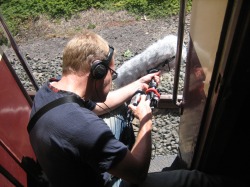 It was quite a warm day, but plenty of sunscreen and a lunch break with awesome chocolate pancakes and plenty to drink made the work easier. Riding in the cabins of the engines was great fun, and the area down at Queenscliff is really beautiful. so in all it was a good way to spend a Sunday as well as being great for recording. The tripod didn't get used today as everything was just far too active for any static microphones. Location Sovereign Hill, Ballarat, Victoria Equipment Zoom F4 Sennheiser MKH 60 Boom pole array and Roland R09 Handheld Time for a road trip! There have been quite a few sounds I have had on the list for a while that I have wanted to collect and a few sounds that would be useful for the Australian sound exhibit I am playing with. A trip to Ballarat and Sovereign Hill was something I’d wanted to do for a while. I knew they had horse drawn carriages and some mining machinery there as well as other sounds that would be worth grabbing. When we arrived it seemed far quieter than I remembered. (Yeah ok so it’s probably been over 10 years since I’d been there but still.), apart from LOTS of people including noisy children, initially there didn’t seem to be too much going on. I remembered they had giant noisy rock crushing machines and all sorts of stuff that didn’t seem to be operating. Anyway we started to have a look around and check out the different areas. Anna had never been to Sovereign Hill so she was enjoying doing stuff like panning for gold and generally wandering around. We did find a few period machines running and had a chat to an old guy that worked there, he told us that the crushing machines would soon be starting up and that there was a display with guys firing old muskets, so the day was starting to look up and get noisier. We went for a ride on the stagecoach and I got to sit up front where I could record both the horses and the wagon moving, then we went across and got to record a whole series of period steam engines and the crushers. The different machine had an awesome selection of different operating sounds and I recorded a heap of material. The more we explored the more interesting sounds I discovered. In fact this has been one of the most useful and varied recording days I’ve had in a long time. 5 hours of walking around was well worth it for all the material it provided. One thing that was noteworthy for today is a technical issue that I had to deal with. I had a problem a few weeks back when the main cable from the mic to the F4 started to play up and cut out. I did get it repaired a couple of weeks ago (supposedly) but it started to play up again a few days ago. I rang my usual suppler before we headed out today to try and get a replacement to find they were shut for the Christmas break. I did manage to rig something up to allow me to keep working today, but it did sacrifice the normal backup track I usually have so it wasn’t an ideal situation. I also found by the end of the day that I had almost drained all the batteries I had with me. Now while I could easily have bought some more as both my units run on normal AA batteries the point was that I had plenty more at home and should have brought them along. I also should really have a backup cable at home because if a cable is EVER going to break it will be in the middle of the night when all the shops are closed just before the alien invasion fleet arrives and you miss out on recording any of it. Obviously you can’t have two of everything unless you have a huge budget to play with, but for the obvious things that are prone to wear and tear like cables it’s a pretty good idea to be packing a spare. I think in general its going to be a good habit to make sure whenever I am going out I have an empty memory card, plenty of batteries and anything else I might need should I find myself recording so many good sounds that I am kept busy all day. Location Noosa Queensland Equipment Zoom F4 Sennheiser MKH 60 Boom pole array and Roland R09 Today as planned I went out to the Noosa Museum in Pomona. The people there were really friendly and helpful. The old guy Bob went through the place with me switching on old machines and using old tools so I could record the sounds. He also gave me a heap of info about various things, how they worked and some of their history. I love this work. So I spent about 20 minutes trying out old telephones and an old telephone exchange, I recorded a Morse code transmitter and thanks to a help sheet that indicated the codes for the entire alphabet I recorded all of the alphabet and numerals, so once they get catalogued people will be able to recreate actual Morse code messages which could be fun. I couldn’t ignore that one of the most interesting sounds in the place was not any of the exhibits, but the old wind blown air vent up on the roof. It circulates air into the building just by spinning in the wind, and there is a shaft down from the top of the roof into the interior. One of those was making a great squeaking sound as it spun, so I extended the boom pole right up into the roof to sample it. Downstairs I recorded the old industrial butter churn as well as a whole bunch of old hand operated house appliances, then I recorded some old adding machines and another old typewriter. Bob also started up an old rotary plough from the 1950’s. It only took him three tries to get the thing started; I remember my mum’s old lawnmower being harder than that to start! In all I recorded about an hour of really good raw material that’s going to add some really interesting material to the library. I’m also thinking I might want to create another category for historical sounds so I can differentiate between a 50 year old car or typewriter and newer ones. www.noosamuseum.spiderweb.com.au/ |
AuthorStephan Schütze has been recording sounds for over twenty years. This journal logs his thoughts and experiences Categories
All
Archives
April 2019
|
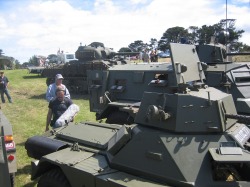
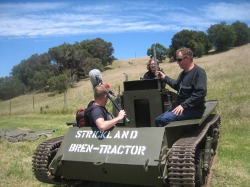
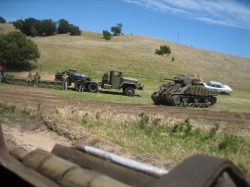
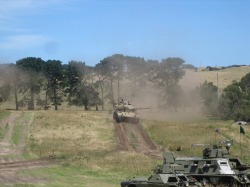
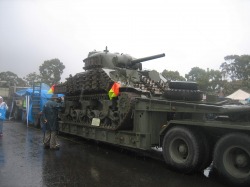
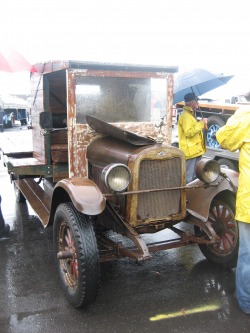
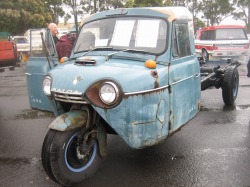
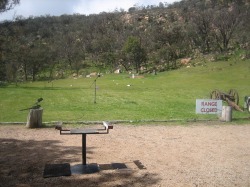
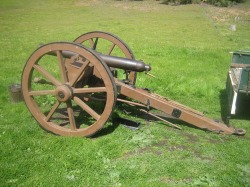
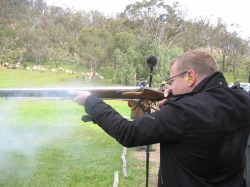
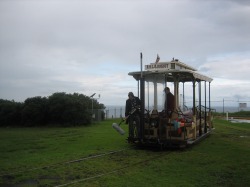
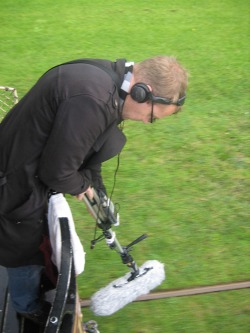
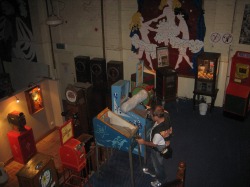
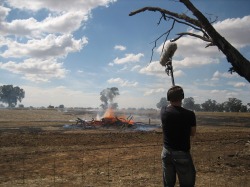
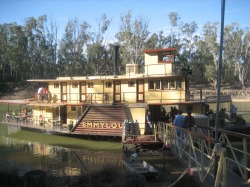
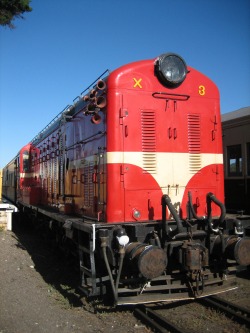

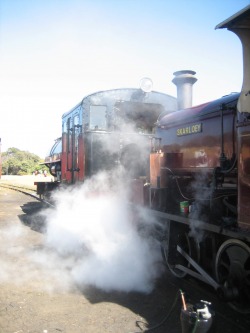
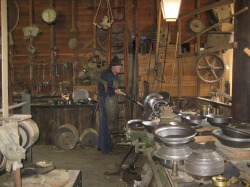
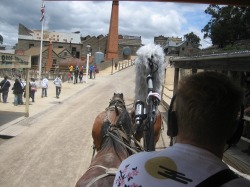
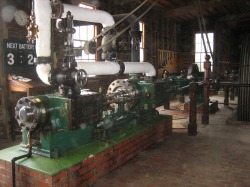
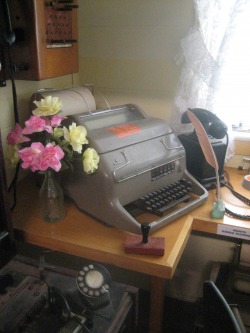
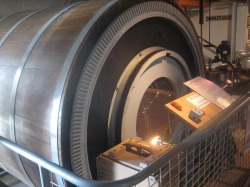
 RSS Feed
RSS Feed
